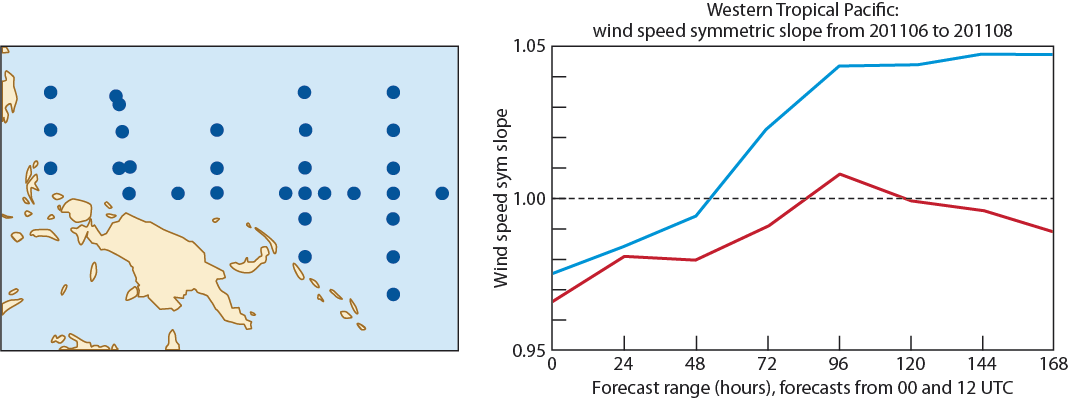

An updated version of the ECMWF forecasting system (known as cycle 37R3) was implemented on 15 November 2011, containing a collection of improvements to the forecast model, the data assimilation and the ensemble prediction system.
The main changes to the atmospheric model are the modifications of entrainment and detrainment in convection, of supersaturation and deposition rates in clouds, and of surface roughness. The changes to the convection scheme produce a significant positive impact on near-surface temperature and wind forecasts in the Tropics as shown in the figure.

Locations in the western tropical Pacific (left) where measurement buoys provide wind data used for the verification of the improved wind forecasts. The panel on the right shows model-to-observation ratios of wind speed variances (ideally = 1) as a function of forecast range (from 0 to 7 days) for the new (red) and the previous (blue) operational version.
The update of supersaturation and deposition rates in clouds mostly affects the amount of liquid water in supercooled clouds, leading to reduced night-time cooling and thus reduced cold temperature biases in certain winter situations at high latitudes.
Variable bias corrections for aircraft temperature observations, the assimilation of rainfall measurements from NEXRAD radars over the United States, and the assimilation of ozone measurements from infrared satellite instruments were also introduced. These changes increase the number of observations used in the data assimilation system and enhance the physical consistency of temperature and moisture analysis.
The main changes to the ensemble prediction system (EPS) are the use of the NEMO ocean model (instead of HOPE) and the NEMOVAR ocean data assimilation system. Now, the 12 UTC EPS run is also coupled to the ocean model from day10 onwards; previously only the 00 UTC run was coupled.
Users of ECMWF’s web pages may have noticed that most of the displayed forecast charts are now being produced with the new version of the ECMWF visualisation software, Magics++.
